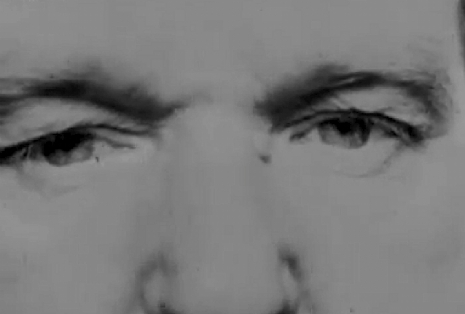
When the poet Stephen Spender visited Henry Moore at his home in 1960, he asked the sculptor ‘what were the differences of his aims when he did an abstract drawing, or a representational one, or a portrait.’ Moore replied that there were at least 5 or 6 different kinds of drawing used in the process of creating work.
(1) The kind of drawing he made when he was trying to study the organic form of nature of an object. This was the kind of drawing which consisted of trying to find something out. He said in this connection that it was impossible for anyone to do drawings without making discovery about the structure of objects.
(2) Trying to describe the objects, for example, when he did a drawing of his daughter or some other life figure, or perhaps even of a bone.
(3) The kind of drawing he did when he was trying to clear his mind of an idea for a piece of sculpture: to plan it out, to see it from different angles and so on, to get an idea of what it would look like.
(4) Drawings which he would call exploratory. He would start simply perhaps by scribbling a few lines and then discovering from them a shape which led on to something else. These are the kind of drawings which arise from doodling.
(5) Drawings in which he attempted to explore the metamorphosis of objects. He would draw something realistically and then try to discover how it could take some other shape. He would turn realistic subjects into an abstraction through drawing it first realistically and then abstracting from it.
(6) What he called ‘imaginative’ drawings in order to create an atmosphere of dream. In this category, he would draw figures standing against a background.
Moore was influenced by Picasso (the solidity of flesh, the abstraction of figures) and primitive art, in particular Mexican which he described as ‘a channel for expressing strong hopes, beliefs and fears.’ Moore’s work continued in the tradition of celebrating the human condition. He aimed to bring an affinity between the human figure and the landscape. At times his abstract forms were not as easily assimilated by the viewer as more classical presentations - their scale and lack of identifiable facial features left the viewer to ponder their own humanity and role in the world. Sadly these days this seems to mean stealing Moore’s sculptures for scrap metal.
There was also great repetition with Moore - the lessons he had learnt in sketching the shadowy figures of Londoners sheltering from the Blitz in the Underground tunnels, was re-created time and again, while his attraction to mother and child most likely came from the personal heartache of his wife, Irina’s miscarriages, and the eventual joy at the birth of his daughter Mary.
In 1951, film-maker John Read (son of art critic Herbert Read) made the first documentary on Henry Moore, in which the sculptor explained the tradition of his work, his influences, and the process by which he created his own sculptures - form sketches, drawing, to models and casts.





